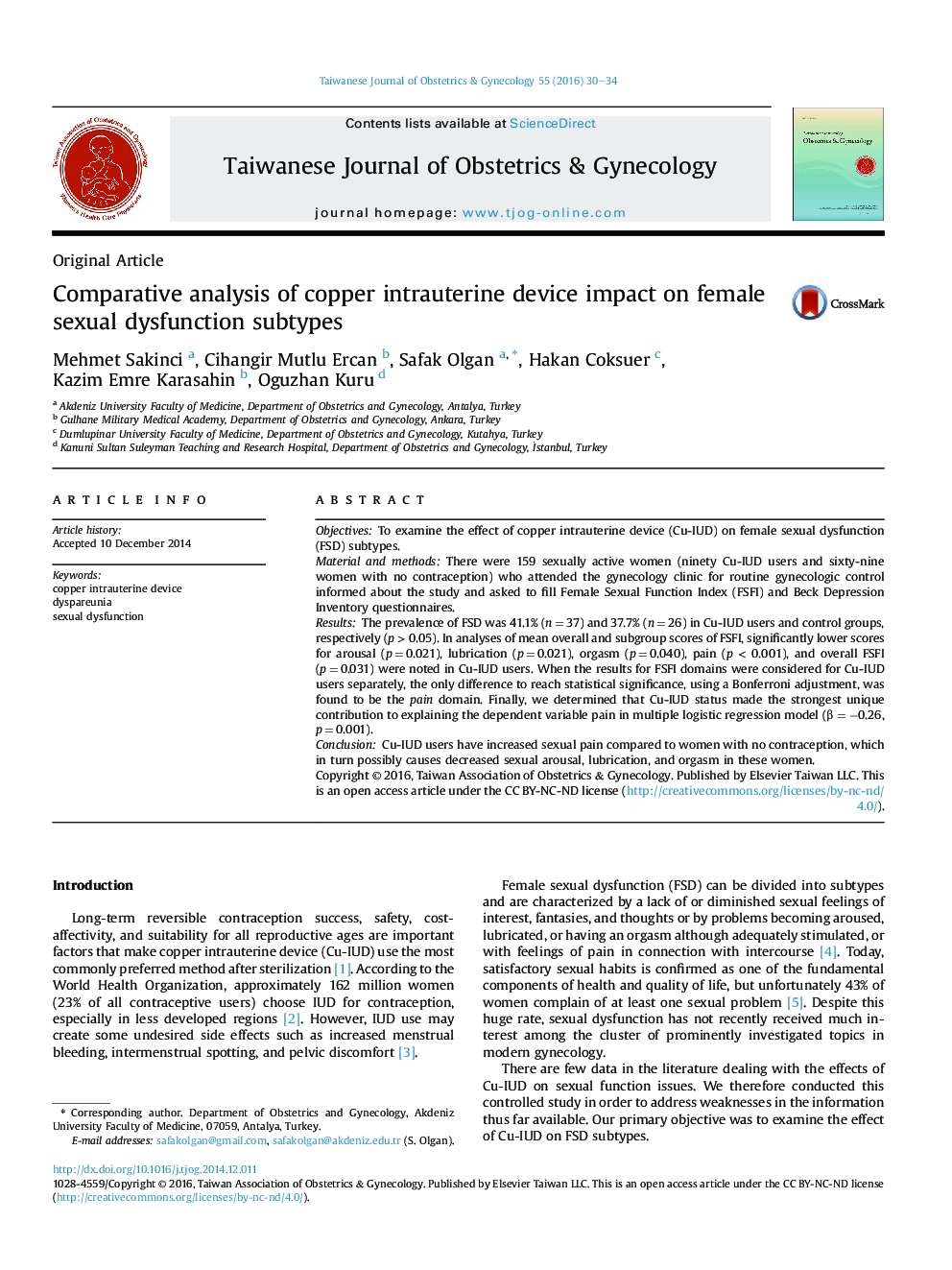| Article ID | Journal | Published Year | Pages | File Type |
|---|---|---|---|---|
| 3975009 | Taiwanese Journal of Obstetrics and Gynecology | 2016 | 5 Pages |
ObjectivesTo examine the effect of copper intrauterine device (Cu-IUD) on female sexual dysfunction (FSD) subtypes.Material and methodsThere were 159 sexually active women (ninety Cu-IUD users and sixty-nine women with no contraception) who attended the gynecology clinic for routine gynecologic control informed about the study and asked to fill Female Sexual Function Index (FSFI) and Beck Depression Inventory questionnaires.ResultsThe prevalence of FSD was 41.1% (n = 37) and 37.7% (n = 26) in Cu-IUD users and control groups, respectively (p > 0.05). In analyses of mean overall and subgroup scores of FSFI, significantly lower scores for arousal (p = 0.021), lubrication (p = 0.021), orgasm (p = 0.040), pain (p < 0.001), and overall FSFI (p = 0.031) were noted in Cu-IUD users. When the results for FSFI domains were considered for Cu-IUD users separately, the only difference to reach statistical significance, using a Bonferroni adjustment, was found to be the pain domain. Finally, we determined that Cu-IUD status made the strongest unique contribution to explaining the dependent variable pain in multiple logistic regression model (β = −0.26, p = 0.001).ConclusionCu-IUD users have increased sexual pain compared to women with no contraception, which in turn possibly causes decreased sexual arousal, lubrication, and orgasm in these women.
